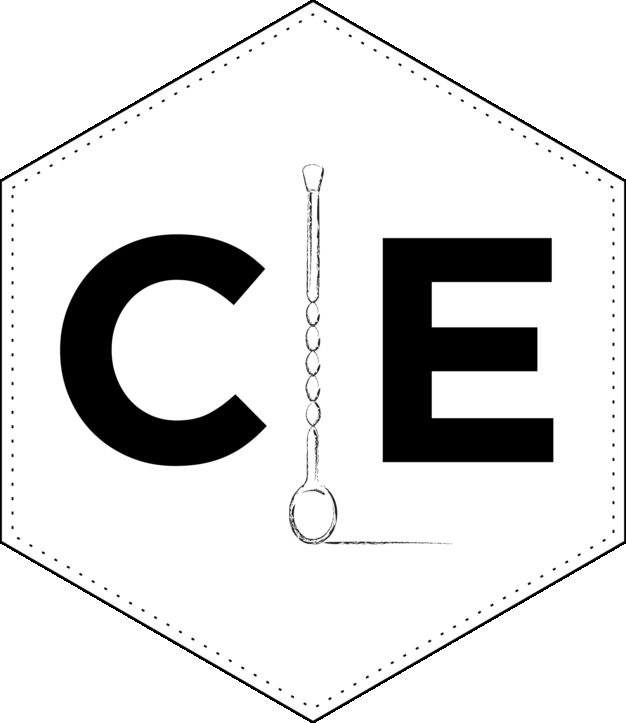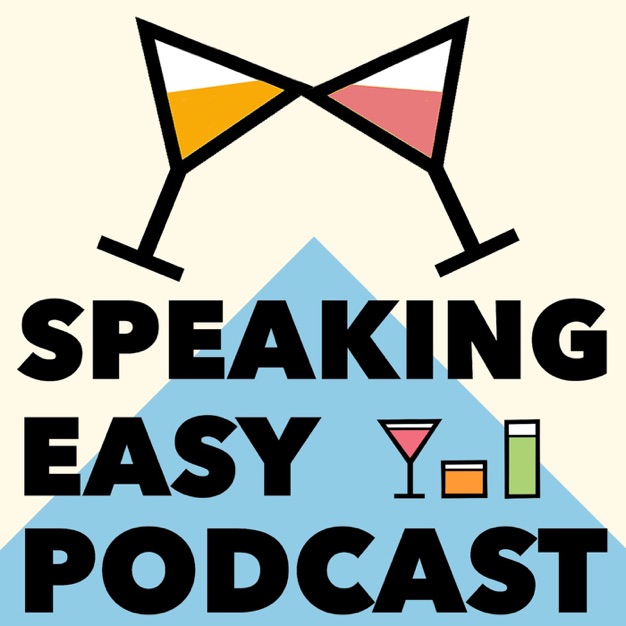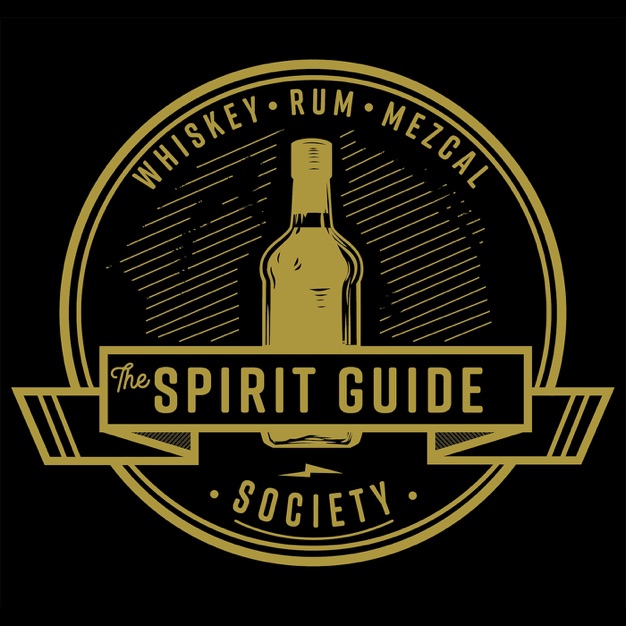
The Modern Bar Cart Podcast
Eric Kozlik
- 25 minutes 23 secondsEpisode 293 - AI Cocktails (Part 1)
Eric interviews Rob Nester, creator of the hit podcast, Drinking with Robots, about the rise of artificial intelligence in the cocktail space.
This is part 1 of a two-part investigation that poses the following question: in what ways might AI transform how we create, enjoy, and perhaps even think about cocktails in the future?
In this installment, we talk about Rob's origin story, how he came up with the concept for Drinking with Robots, and the insights he has gleaned about datasets, prompt generation, and the human-AI divide over the course of the first season of the show.
Next time, we'll tackle slightly thornier questions, like whether or not LLMs possess the ability to surprise and delight a human palate, the ways in which AI can be effectively (or poorly) implemented in existing bar programs, and some of the big, philosophical questions that arise when you put computers in a position to dictate what we drink and how it tastes.
21 December 2024, 9:50 am - 1 hour 1 minuteBONUS: ASMR Rare Chartreuse Tasting
Courtesy of the illustrious David T. Smith, author of The Gin Dictionary, Disco Cocktails, and other fine bibulous publications, I and a group of friends were treated to a rare Chartreuse tasting after we had wrapped up all of our work at the American Distilling Institute’s annual conference and trade show this past August in Baltimore, MD.
Our casual panel of tasters included:
-
Eric Zandona, author of The Tequila Dictionary and The Bourbon Bible
-
Sara Sergent, botanical savant and owner of Alpine Distilling in Park City, Utah
-
Joe Barber of Stargazey Spirits and The Wrecking Coast Distillery in the UK
-
And Reece Sims, creator of Flavour Camp
Here’s a (hopefully) somewhat complete list of the stuff we tasted, which may explain our silliness toward the end:
-
The standard Green Chartreuse and Yellow Chartreuse - but these were both taken from the soleras or “infinity bottles” of David T. Smith, so they felt a bit more special
-
Liqueur d’Elixir - A tribute to one of the early proto-variants of Green Chartreuse - this is essentially a half-step between the elixir vegetal and Green Chartreuse
-
9iere Centennaire - A tribute to the 900th anniversary of the founding of the Order of St. Bruno (also known as the Carthusians)
-
Chartreuse Verte VEP (that’s the fancy green Chartreuse)
-
A bottling by the French Order of master Sommeliers from 2018 - which is a small batch, custom variant of Yellow Chartreuse
-
Tarragona, which is another Chartreuse recipe, celebrating either Tarragon (the herb) or the formulation that the monks made when they were in exile in Spain for a couple decades in the early 20th century
-
Three variants of Chartreuse Genepy (the traditional, intense, and abrupt)
-
And finally, a lovely Florio Amaro bottled in the 1970s, provided by yours truly.
Other topics we discuss include:
-
The Carthusian monk documentary entitled Into Great Silence
-
The mythical “beast of Gevaudan” that ravaged the French countryside once upon a time
-
The taxonomy of the Artemisia botanical family
-
A whole bunch of strong cocktail-related opinions about Chartreuse and genepy,
-
And much, much more
25 November 2024, 10:00 am -
- 50 minutes 44 secondsEpisode 292 - Flavored Whiskey: Breaking the Taboo
Eric leads a panel discussion about flavored whiskey at the 2024 American Distilling Institute Conference and Trade show in Baltimore, Maryland. The esteemed panel includes:
- Virginia Miller, The Perfect Spot, World's 50 Best
- Brad Nichols, Flavor Man
- Sara Sergent, Alpine Distilling
- Keven Szady, Murlarkey Distilled Spirits
We cover a range of important topics in this discussion, all related to the art and craft of bringing flavored whiskeys to market in a crowded and opinionated market. Some of the specific threads we pursue include:
- Who's drinking flavored whiskey and how we can grow that demographic
- Using chefs, bartenders, and culinary inspiration as fuel for product development
- Navigating the regulatory grey areas pertaining to flavored whiskey and distilled spirits specialties
- Optimizing your formulation when using both fresh botanicals and manufactured specialty flavors
- How to approach branding and product placement of flavored whiskeys within an existing portfolio with other, non-flavored whiskeys.
- What might set a "high-end" flavored whiskey apart from the perceived "low-brow" options that currently crowd the shelves.
- And much, much more
8 November 2024, 12:52 pm - 50 minutes 20 secondsEpisode 291 - Crushing Your Next Cocktail Competition
Eric presents a "soup-to-nuts" crash course on how to crush your next cocktail competition. If you'd like to view this seminar with slides, you can watch it on YouTube.
Some of the topics covered include:
- How to structure your approach to cocktail competitions so that they can help to advance your career goals
- An overview of the three main types of cocktail competitions (digital, local, and "the big leagues")
- Spotlights on technical learning, networking, photo and video capture, & social media
- Cocktail design strategies and professional presentation techniques
- And much, much more
25 October 2024, 12:09 pm - 1 hour 2 minutesEpisode 290 - Intro to Awamori with Jeremy Webb
In this globe-trotting, Japanofilic conversation with Awamori champion Jeremy Webb of Webb's Grainworks, some of the topics we discuss include:
-
The technical definition of Awamori, especially with respect to how its distillate base, koji treatment, and aging practices differentiate it from Shochu and Japanese Whisky.
-
How the history and culture of the Ryukyu Kingdom - a nation separate from the rest of Japan until the late 1800s - impacted how Awamori developed in relation to other traditional Asian spirits.
-
The special role that materials like ceramics and stainless steel play in the production and service of Awamori.
-
Why Jeremy decided that now is the time to import, blend, and spread the good news of Awamori in the US Market and how his flagship product, Taniguchi Awamori, took home the gold at the 2024 ADI International Spirits Competition.
-
And the best ways to enjoy Awamori, both in a spirits-and-food pairing context and as an ingredient in classic and original cocktails.
-
Along the way, we explore why Okinawans aren’t impressed by American copper stills, Awamori’s pivotal role in the development of the martial art, Karate, the fun and surprising story behind the name “Taniguchi,” and much, much more.
15 October 2024, 12:29 pm -
- 1 hour 1 minuteEpisode 289 - The Bartender's Pantry with Jim Meehan
In this wide-ranging conversation with cocktail expert and bar mentor Jim Meehan (@mixography), author of The Bartender’s Pantry, some of the topics we discuss include:
-
How ingredient sourcing and processing ties into the exercise of integrity--not just in sourcing the highest “quality” ingredients, but also exploring how your purchasing power plays into our larger agricultural and economic systems.
-
The way that Jim and his illustrator, Bart Sasso, used procedural graphics to create a four-dimensional rendering of the ingredient prep recipes. I’ve never seen illustrations as clever as these in a cocktail or a cookbook, and I think you’ll love them.
-
Why the process of being a good cocktail generalist actually forces you to become a micro-specialist in many different facets of cooking and mixology.
-
The importance of taking ingredients and recipes seriously while also preserving the magic of fun and playfulness in cocktails.
-
The fascinating, delicious gray area that opens up when you realize that the ingredients you’re transforming in the kitchen are also transforming YOU
-
And much, much more.
26 September 2024, 5:42 pm -
- 52 minutes 56 secondsEpisode 288 - Your Tasting Notes are Bullshit
In this LIVE Seminar recording, Eric identifies two key strains of B.S. that run through contemporary tasting notes. Then, using a concept he refers to as "locating the 'heart' of a spirit," he explores how to generate tasting notes that say accurate things about flavor while also allowing people to connect with the liquid in a glass or a bottle.
12 September 2024, 9:00 am - 1 hour 15 minutesEpisode 287 - Rum A Tasting Course with Ian Burrell
In this, sweet, funky, and occasionally grassy conversation with Ian Burrell (@therumambassador), author of Rum A Tasting Course, some of the topics we discuss include:
-
Why Ian takes a “flavor-first” approach to rum (in general, but especially in this book), and how these flavors are gateways to history, geography, culture, and conversation.
-
The different ways that rum can be categorized, and why these categories are a gateway to all the delightful exceptions that will bamboozle and delight your palate and your brain.
-
We also discuss the three primary types of rum drinkers and the ways these different mindsets and preferences weave through the contemporary story of rum as we experience it at our favorite bars and distilleries.
-
Ian offers a glimpse into some of the completely unique features of RUM: A Tasting Course, including how to make a DIY aroma kit to practice your nosing skills, how he learned about some of the more “illicit” styles of cane spirits being produced around the globe, and how to read a rum label in a way that gives you clues as to what’s in the bottle.
-
We also explore how rum is the most global spirits category of all and why it can benefit from a “complex-systems” approach that introduces people to many different levels of description on their journey to understand and enjoy the bounty of world cane spirits.
-
Along the way, we riff on why it’s awesome to know the shoe size of your favorite rum blender, the elaborate heist that Ian has planned in order to secure a barrel or two from Foursquare Distillery, which sex act is most comparable to the experience of drinking Campari, and much, much more.
Every conversation with Ian is both a joy and a complete reinforcement of WHY he is truly THE Global Rum Ambassador. I hope you’ll take the opportunity to give him a follow on social media and look into preordering his new book, Rum A Tasting Course, which will be available in the US about a month after this podcast goes live.
24 August 2024, 8:07 pm -
- 1 hour 10 minutesEpisode 286 - The Case of the Quantum Coaster
Eric investigates the Boce Coaster, descending into a noir mystery narrative to determine if it's possible for a drink coaster to reduce fusel oils in distilled spirits using "quantum tunneling."
Buckle up. This is a weird one.
11 July 2024, 11:46 am - 1 hour 10 minutesEpisode 285 - Letters from Flavor Camp with Reece Sims
In this campy conversation with Reece Sims (@reecesims), creator of Flavor Camp, some of the topics we discuss include:
-
How camps - like bars - act as intense and intimate “third places,” where people with shared interests or commonalities can gather and thrive.
-
What Reece does to shake up the traditional ruts we fall into when tasting spirits--from the way she sets up the layout of the room, to the way she goes about selecting spirits for any given flight.
-
And did you know: Flavor Camp isn’t just the name of the program; it’s an organizing paradigm that Reece deploys that both SIMPLIFIES the typical flavor wheels we often see used in spirits tastings, and also EXPLODES the restrictions implied by traditional spirits categories.
-
We also talk about how to navigate the “personal” and the “public” when generating tasting notes. How do you take something that tastes like a certain thing to YOU--like grandma’s kitchen, or the woods after a rain--and figure out how to communicate that very unique flavor to other people who may not share your experiences.
-
Finally, we talk about the notion of the “Head-Fake” in the spirits and cocktail world: which is when you overtly focus on one thing, but that ONE THING teaches you so much more about other components of leading a meaningful life.
-
Along the way, we discuss the one booze billboard that triggered me in a major way, how to pair donuts with whiskey, why simple cocktails made with high quality spirits are waaaay better than molecular gastronomy, and much, much more.
21 June 2024, 4:58 pm -
- 12 minutes 53 seconds2024 Second Half Preview
Eric shares some exciting previews of the episodes to come in the second half of 2024, including sneak previews of "Cocktail Futurism" interviews with Rob Nester (Drinking with Robots) and Jayme Blaschke (Lagoon of Mystery).
6 June 2024, 12:55 pm - More Episodes? Get the App
Your feedback is valuable to us. Should you encounter any bugs, glitches, lack of functionality or other problems, please email us on [email protected] or join Moon.FM Telegram Group where you can talk directly to the dev team who are happy to answer any queries.
 Cocktail Enthusiast
Cocktail Enthusiast
 How To Be A Better Drinker
How To Be A Better Drinker
 Speaking Easy - A Cocktail Podcast
Speaking Easy - A Cocktail Podcast
 The Spirit Guide Society
The Spirit Guide Society
 Simple Cocktails Podcast
Simple Cocktails Podcast
 Bartender HQ Podcast : Bar Culture, Cocktails and Flair Bartending for Everyone.
Bartender HQ Podcast : Bar Culture, Cocktails and Flair Bartending for Everyone.